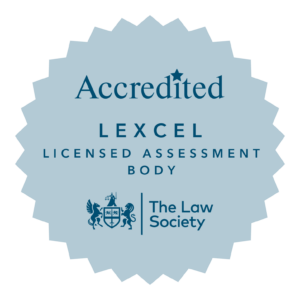In this case, the local authority was ordered to return the baby back to parents’ care in the case of Re S (A Child) [2013] EW Misc 2 (CC) after the court made no findings against the parents in respect of the fractures sustained by 3 month old baby. The Court found that the child was more susceptible to non-accidental injuries as a result of a Vitamin D deficiency.
Details of the case
This case concerned a 3 month old baby (referred to as ‘S’) who had sustained 6 fractures whilst in the care of her parents and/or maternal grandmother. The parents first presented S at hospital on 13th October 2011 due S’s knee appearing swollen. The hospital noted no bony injuries and S was discharged later that day. On 22nd October 2011 the parents took S to hospital for a second time as they noticed S had a swollen arm. An x-ray undertaken at the hospital revealed a spiral fracture to S’s left upper arm. The parents could offer no explanation as to the cause of the injury and explained that they had not witnessed any accidental events which could assist in explaining the injuries. A skeletal survey undertaken on 24th October revealed further fractures to two left ribs. In the absence of any explanation offered by the parents, the Consultant Paediatrician referred this matter to social services as he suspected that the injuries were likely to have been non-accidental. The paediatric radiologist reports that the 6 fractures were sustained on various dates, likely to have been between 15th September and 19th October.
It should be noted that the parents also had another child who at the time was 3 and a half years old and suffered from Hirschsprung’s Disease which required particular care and attention from the parents. The local authority issued an application for an Emergency Protection Order in respect of both children on 26th October. The parents agreed on 27th October for the children to be accommodated under section 20 of the Children Act 1989. Care proceedings were issued on 2nd November 2011. A Fact Finding hearing commenced on 23rd March 2012, and the court heard evidence from the consultant paediatric radiologist, the health visitor and the Consultant Paediatrician. An issue which arose from the evidence of the consultant paediatrician was that of his experience and expertise in understanding whether a genetic abnormality of bones, metabolic bone disease or demineralization of the bone caused by a vitamin D deficiency gave rise to a propensity to fracture. The paediatrician accepted that such an issue was outside of his expertise, therefore leaving the court without an expert view on the point. The court adjourned the hearing on the second day, and directed that an expert in the field of biochemical analysis coupled with endocrinology should be instructed to report in this matter.
The matter returned to court to conduct a fact finding hearing having received a report undertaken by the endocrinologist. In evidence, the consultant paediatrician stated that the injuries were likely to be non-accidental and require a degree of force. She also stated that whilst there could a be vitamin D deficiency, there was little, if any, support or evidence of fractures being caused by lower than normal vitamin D levels where there is no evidence of rickets. She also upheld her view that there was no correlation between vitamin D deficiency and fractures nor an increased propensity to fracture. However, the Professor of Endocrinology reported that the absence of radiological evidence does not mean that there is ‘no rickets’, therefore there is a stage of rickets before it is identifiable radiologically. The Professor informed the court that S’s vitamin D levels were never higher than insufficient and were reported to be borderline on 2nd November 2011. He did acknowledge, however, that in relation to injuries such as those before the court, some force has to be applied. However, in his view it was likely that S was vitamin D deficient in utero and in the early neonatal period, and although this did not render S more likely to injury, it may have ‘increased vulnerability to fracture’. The judge drew from the Professor’s conclusions that it would be reasonable in this case to assume that a lesser degree of force would be required if, as a result of vitamin D deficiency, S’s bones were sub-optimal.
The judge, in considering the parents’ evidence, took the view that despite some of the inconsistencies with the records available to the court, these were not parents seeking to mislead the court or seeking to cover up matters. They both sought to assist the court to the best of their ability and the judge did not consider there to be any evidence of the parents misusing drugs or alcohol, nor was there any evidence of angry or violent outbursts, short temper, volatility, irritability or dysfunction. The parents accepted that there were fractures, but insisted that they were not the cause of the injuries, nor had they witnessed how the injuries were sustained.
The court reminded themselves of Re U: Re B (Serious injury; standard of proof) and noted the words of Butler-Sloss P that it is it the court’s responsibility to survey a ‘wide canvas’ approach and further noted from the case of Re L [2011] EWCA Civ 1705 that ‘clearly from the forensic standpoint given any degree of uncertainty in the medical and scientific field the judge’s appraisal and confidence in the parent is absolutely crucial to the outcome’. The judge also noted the quotation provided by counsel for the maternal grandmother from R v Harris and others [2005] EWCA Crim 1980 para 135:
“There are areas of ignorance. It is very easy to try and fill those areas of ignorance with what we know but I think that it is very important to accept that we do not necessarily have a sufficient understanding to explain every case.”
The medical evidence before the court suggests that there is a likelihood that the injuries were caused non-accidentally and caused by force by an adult member of the household. The judge, however, adopted a ‘wide canvas’ approach to the case, and took into consideration the manner in which the parents gave evidence. The judge remained surprised that at no point during S visiting health professionals before 22nd October did they note any fractures to S nor did they raise any suspicion about the parents.
Conclusion reached by the Judge
The judge, in considering all the evidence on the balance of probabilities, concluded that the likely incidence of an increased vulnerability to fracture was the most likely cause of S’s injuries. The judge considered the parents to be careful and child-focussed and to have demonstrated a good quality of parenting , particularly in dealing with the elder sibling. The judge, in light of the above evidence, found that it was unlikely that S’s injuries were caused by non-accidental force, and in his judgment concluded that the injuries were more likely to have had a genuinely accidental cause. He was not able to conclude, however, at which point the normal day-to-day handling crossed over to the point when S’s vulnerable bone structure was compromised. The judge discharged the interim care order and directed that the local authority to revise the interim care plan for a phased return of S to her parents.
The impact of the decision
Issues of injuries sustained by a child are frequent in care proceedings whereby the parents are often the alleged perpetrator. When faced with what is often conclusive medical evidence suggesting that injuries to a child have been caused non – accidentally, parents naturally fear that they will be ruled out as carers for their children and that the court will make findings against them despite the evidence they give. But what happens when the medical evidence is not conclusive? In cases such as Re S (A child), it is clear that the role of the court is not only to consider the medical evidence put before them, but to also consider the evidence of the parents and the manner in which it is given. As noted in Re S (A Child), when there is uncertainty in the medical evidence the impression of which the Judge holds of the parents or alleged perpetrator is crucial to the outcome.
This is not an unusual case, and it can often be a difficult time for parents involved in care proceedings concerning issues such as alleged physical abuse. However, with the correct legal advice and support from a legal representative it can make the proceedings an easier process to understand and ensuring what is expected of you during the course of the proceedings.
If you would like more information about the case or how it may impact on you or your children the please contact one of our specialist solicitors here.
Lauren Hutton
Paralegal
Creighton & Partners


